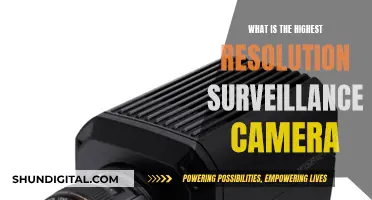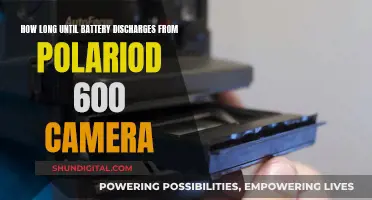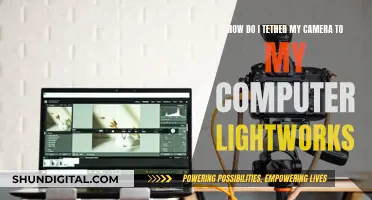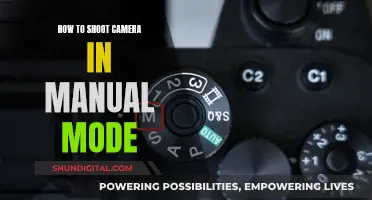
Police car camera systems are an important tool for law enforcement agencies, providing video evidence of incidents, documenting interactions between officers and the public, and improving transparency and accountability. These cameras are typically installed in police vehicles to capture footage from different angles, including the front, rear, and sides of the car, as well as the interior to monitor suspects in custody. The systems may include multiple cameras, offering a panoramic or 360-degree view of the surroundings, and often feature high-definition video and audio recording capabilities, night vision, and wireless data offloading. The footage captured by these cameras can be used for training, investigations, and as evidence in court, helping to ensure officer safety and build trust with the communities they serve.
| Characteristics | Values |
|---|---|
| Purpose | To capture an objective record of incidents involving the police |
| Camera Placement | Front-facing, rear-facing, side-facing, inside the car, outside the car |
| Camera Features | HD, night vision, wide-angle lens, panoramic view, 360-degree view, 1080p |
| Audio Features | Wireless microphone, noise cancellation, audio recording |
| Storage | SD memory cards, cloud storage, automatic file transfer, local network storage |
| Additional Features | GPS tracking, event tagging, body cam integration, live streaming |
What You'll Learn

Cameras can be installed inside and outside the car
Cameras can be installed both inside and outside the car. The former is known as an in-car camera system, while the latter is referred to as an exterior camera. In-car camera systems are designed to capture the interior of a police car, including the rear-seat area where suspects or prisoners may be held. These systems can provide high-definition video and audio recording, with some offering night vision capabilities. They are crucial for capturing objective records of incidents and can be used to enhance officer safety, accountability, and transparency.
Exterior cameras, on the other hand, are typically mounted on the outside of the police car, often integrated into the light bar or dashboard. They provide a broad view of the activity surrounding the vehicle and can include front-facing and rear-facing cameras, as well as cameras mounted on the sides of the car. Together, these exterior cameras can offer a panoramic view, with some systems providing up to a 270-degree or even a 360-degree field of vision.
The combination of in-car and exterior camera systems ensures comprehensive coverage of police operations, capturing critical evidence and providing an independent and objective record of incidents. This helps to protect both officers and citizens, improve transparency and accountability, and enhance the overall efficiency of police departments.
The placement of cameras inside and outside the car is a crucial aspect of modern policing, providing a detailed visual record that can be used for training, investigations, and evidence in court.
Building a DIY Remote Surveillance Camera: A Step-by-Step Guide
You may want to see also

Cameras can record in HD and at night
Police car cameras are an essential tool for law enforcement agencies, providing clear and detailed video evidence that can be used in investigations, prosecutions, and training. These cameras are designed to meet the unique challenges faced by modern police departments, offering high-quality footage that captures every detail, even in low-light conditions.
One of the key advantages of police car camera systems is their ability to record in HD, ensuring that every activity in and around the vehicle is captured with crystal clarity. The Pro-Vision police in-car camera system, for instance, offers a 1080p HD picture, providing comprehensive coverage from both inside and outside the patrol vehicle. This includes a 175-degree 1080p interior view, made possible by a compact interior night vision camera that delivers exceptional footage regardless of lighting conditions.
The ability to record in HD is particularly valuable when trying to identify specific details, such as license plate numbers or individuals' faces. This level of clarity ensures that no crucial piece of evidence is missed, making it a powerful tool for law enforcement.
In addition to HD recording, police car cameras also excel in low-light and night-time conditions. The Pro-Vision AHD Forward-Facing Camera, for instance, is designed with Wide Dynamic Range, allowing it to capture clear and detailed footage even in the darkest surroundings. This capability ensures that critical details are not lost, no matter the time of day or lighting conditions.
The combination of HD recording and night vision capabilities in police car cameras makes them a valuable asset for law enforcement agencies. Not only do they provide high-quality footage that can be used as evidence, but they also enhance officer safety, improve training, and promote transparency and accountability within police departments.
With the ever-evolving advancements in camera technology, police car camera systems are becoming even more sophisticated and effective. The latest innovations, such as artificial intelligence integration and panoramic lenses, further enhance the ability of these systems to capture critical details and provide a comprehensive view of incidents.
The Obscura Camera's Ancient Origins: A Historical Overview
You may want to see also

Cameras can be integrated with body-worn cameras
In-car camera systems are crucial for capturing objective records of incidents. They are attached to police cruisers and record audio and video for both outside-facing activity and within the prisoner control area of the rear seat. In-car camera systems can be integrated with body-worn cameras to ensure that both in-car and body-worn footage is captured, providing a more complete view of an incident.
The Waterloo Regional Police Service (WRPS), for example, has approved the permanent deployment of both Body-Worn Camera (BWC) and In-Car Camera (ICC) systems region-wide. The BWC is a transparent policing tool capable of providing accurate records of interactions with the public. The WRPS's ICC system is fully integrated with BWC and their Digital Evidence Management System (DEMS). The system uses cameras and software that automatically scan licence plates, alerting officers to stolen plates or plates registered to suspended drivers. It can also notify officers of missing and wanted persons, as well as vehicles associated with AMBER alerts.
Pro-Vision's in-car camera system can also be integrated with body cameras. When the vehicle's lights or other triggers are activated, the in-car system and body cameras within a 30-foot range can be triggered to start recording simultaneously. This ensures that a comprehensive view of an incident is captured.
The Palo Alto Police Department in California has equipped all 26 of its police cars with a multiple-camera video system that provides a 270-degree view around the vehicle. The system has five separate cameras that provide high-definition video and high-fidelity audio. The department has also acquired nine body-worn cameras that are currently being field-tested.
Charging the Digi Cool Camera: A Quick Guide
You may want to see also

Cameras can be triggered by the vehicle's lights
In-car camera systems are an essential tool for law enforcement, providing comprehensive video coverage of incidents and enhancing officer safety and accountability. One notable feature of these camera systems is their ability to be triggered by the vehicle's lights, ensuring that critical events are captured on camera.
The Pro-Vision in-car camera system is a prominent example of this technology. It offers a 360-degree exterior view and a 175-degree 1080p HD interior view, ensuring that no detail is missed. One of its key advantages is the ability to integrate with body-worn cameras within a 30-foot range. When the vehicle's lights are activated, the in-car system and body cameras are triggered simultaneously, providing a complete view of the incident. This feature is particularly useful for capturing both in-car and body-worn footage, enhancing the overall effectiveness of the camera system.
The Palo Alto Police Department in California has implemented a similar multiple-camera video system in all 26 of their police cars. This system includes five separate cameras that provide high-definition video and high-fidelity audio. Two of the cameras are mounted on the sides of the car and are built into the light bar. When the red lights on top of the car are turned on, the system automatically enters event mode, capturing video and audio of the incident. This setup ensures that crucial events, such as traffic stops or high-speed pursuits, are recorded and can be used as evidence or for increased accountability.
The ability to trigger cameras using the vehicle's lights is a significant advantage in law enforcement. It ensures that officers don't have to rely on manually activating recording devices during high-pressure situations. By automating the process, crucial moments are captured, providing an independent and objective record of events. This not only protects officers against frivolous complaints but also safeguards the public against any potential impropriety.
With the advancement of technology, in-car camera systems are becoming more sophisticated and integrated with other tools used by law enforcement. The ability to trigger cameras using vehicle lights is just one example of how these systems are designed to meet the unique challenges faced by modern police departments, ultimately improving the effectiveness of their operations and strengthening trust with the communities they serve.
Workplace Surveillance Cameras: Federal Law and Your Rights
You may want to see also

Cameras can be integrated with GPS
Police in-car camera systems can be integrated with GPS to provide location and speed data for the vehicle. By connecting a GPS antenna, law enforcement agencies can access real-time information on the vehicle's whereabouts and speed, enhancing the overall functionality of the camera system. This integration offers a comprehensive solution for evidence gathering, officer safety, and transparency in policing.
The GPS integration in police in-car camera systems, such as the Pro-Vision system, offers several benefits. Firstly, it enables law enforcement agencies to pinpoint the exact location of their patrol vehicles, assisting in efficient dispatch and resource allocation. This feature is especially valuable during emergencies or when officers need backup. Secondly, the GPS data can be synchronised with video footage, providing valuable context for investigations and evidence presentation. The GPS information can be overlaid on video recordings, offering a comprehensive view of the vehicle's movements during specific incidents.
Moreover, the GPS integration in police in-car camera systems aids in speed monitoring. By tracking the speed of patrol vehicles, law enforcement agencies can ensure that officers adhere to speed limits and drive safely. This feature is particularly useful for accountability and can help in refuting or substantiating claims of speeding. The GPS data, combined with video footage, provides an objective record of the vehicle's speed at any given time.
In addition to location and speed data, GPS integration can also provide other valuable information. For example, the system may include features such as automatic event triggering based on speed. For instance, if a patrol car exceeds a certain speed threshold, the system could automatically initiate recording, ensuring that high-speed incidents are captured on video. This capability can be invaluable for reviewing pursuits, responding to emergencies, or investigating traffic accidents.
Furthermore, the GPS data obtained from police in-car camera systems can assist in reconstructing events and analysing officer movements during shifts. By reviewing the GPS logs, law enforcement agencies can determine the exact routes taken by officers, the duration of their patrols in specific areas, and any deviations from standard procedures. This information can be crucial for evaluating officer performance, optimising patrol strategies, and ensuring that resources are being utilised effectively.
Fight Camera Tickets: Know Your Mail Rights
You may want to see also
Frequently asked questions
Police car camera systems are typically located on the inside and outside of the police car. Cameras can be mounted on the dashboard, rear-view mirror, or the light bar. Some systems also include body-worn cameras for officers.
Police car cameras serve multiple purposes. They help to capture critical evidence, enhance officer safety, promote transparency, and build trust with the community. Additionally, they can be used for training and to improve officer performance.
The number of cameras in a police car can vary, but typically there are multiple cameras to provide comprehensive coverage. Some systems may include a dashboard camera, rear-facing camera, side cameras, and even body-worn cameras for officers.
Police car cameras are typically activated automatically when the vehicle's lights are turned on or when certain triggers are activated, such as opening the rear doors or exceeding a certain speed. The cameras record video and audio, which can be stored locally or uploaded wirelessly to a secure server.
Police car cameras have been found to be effective in increasing officer accountability, improving community relations, and reducing complaints and false accusations against officers. They also provide valuable evidence for investigations, prosecutions, and training purposes.







